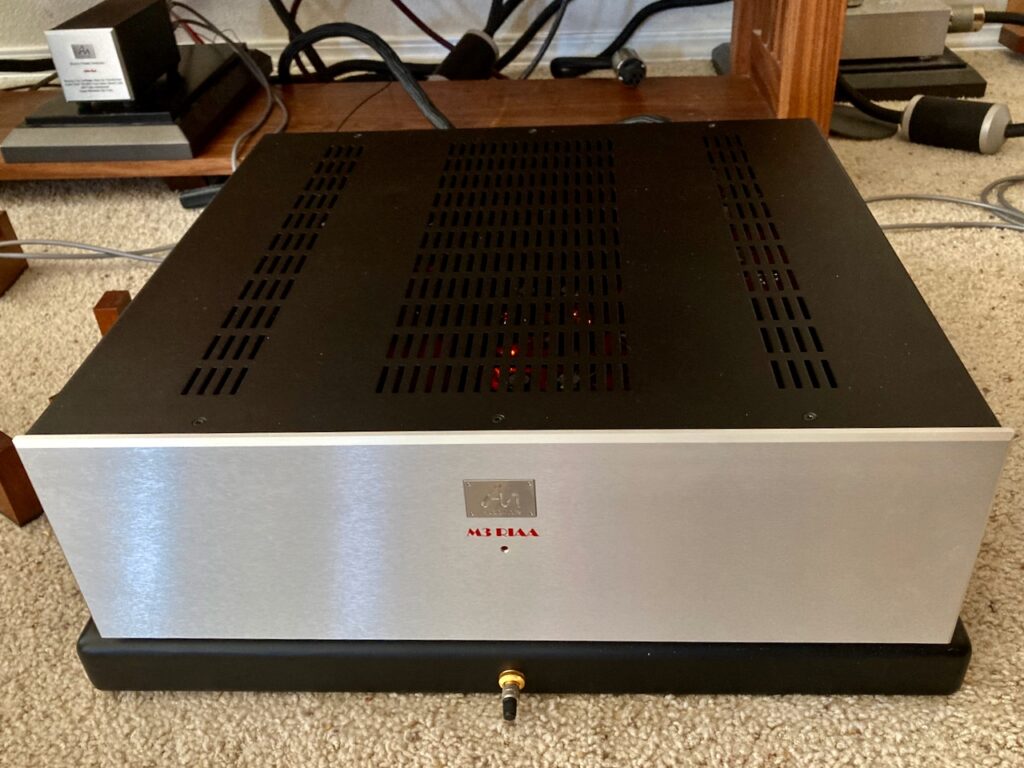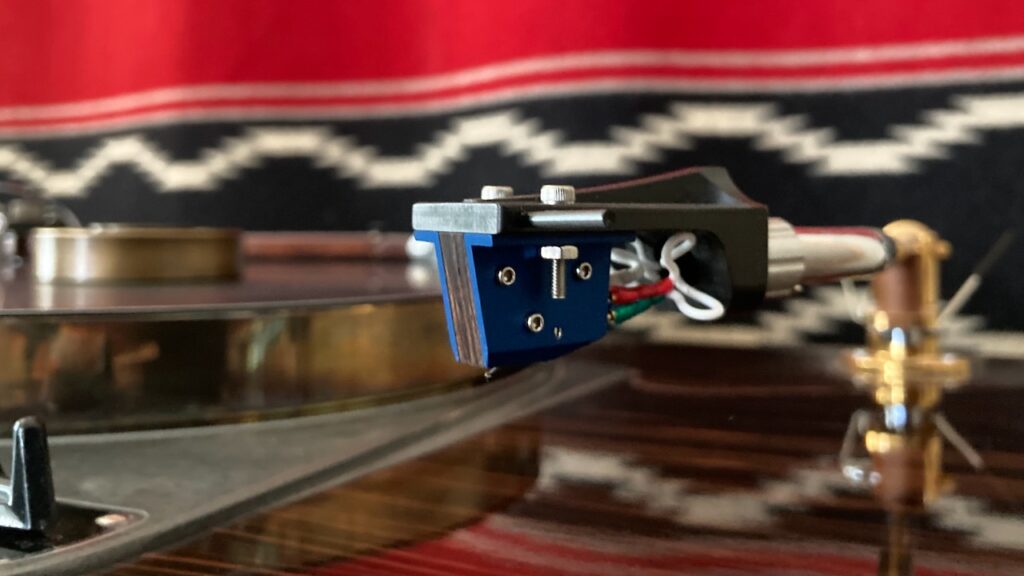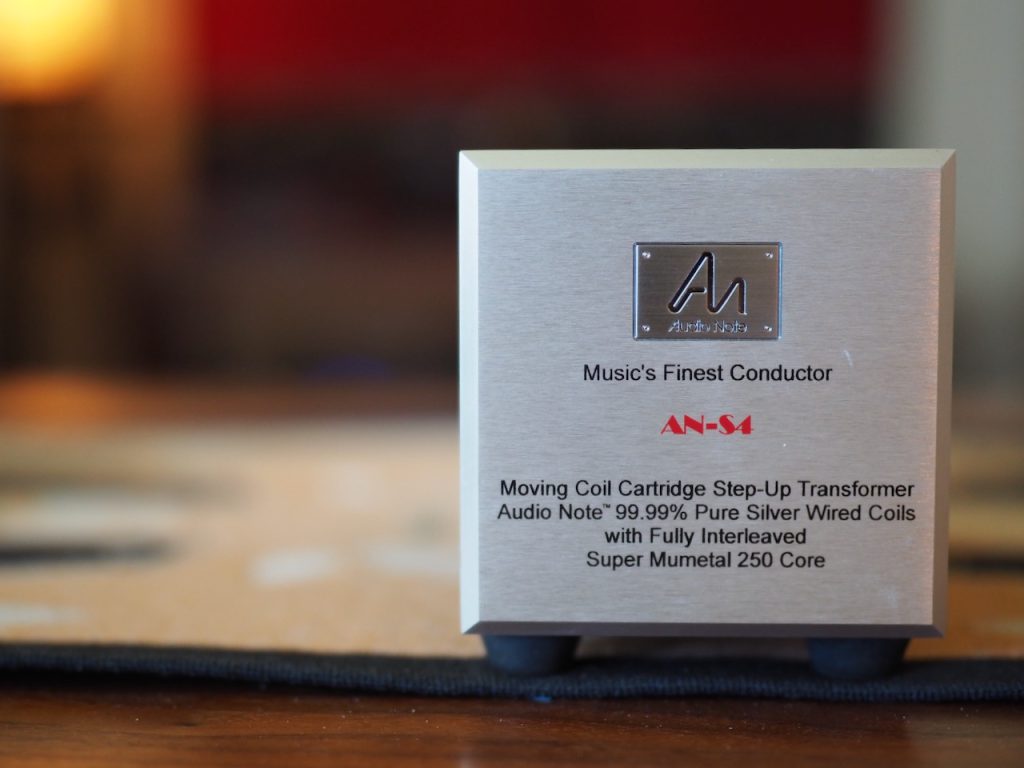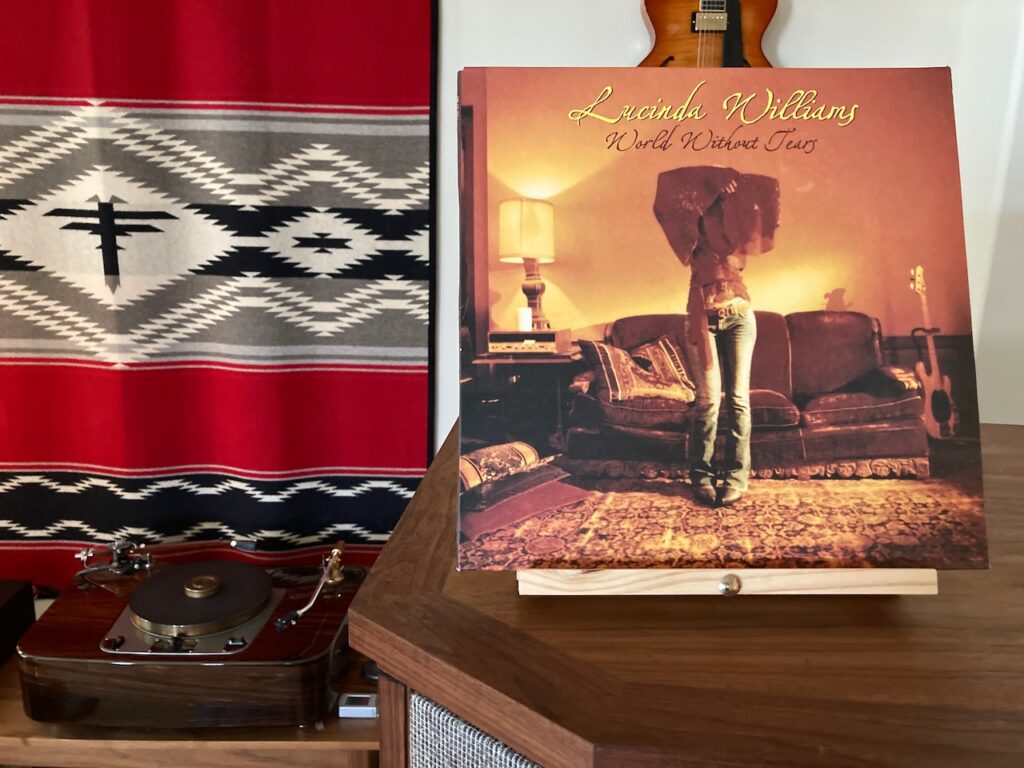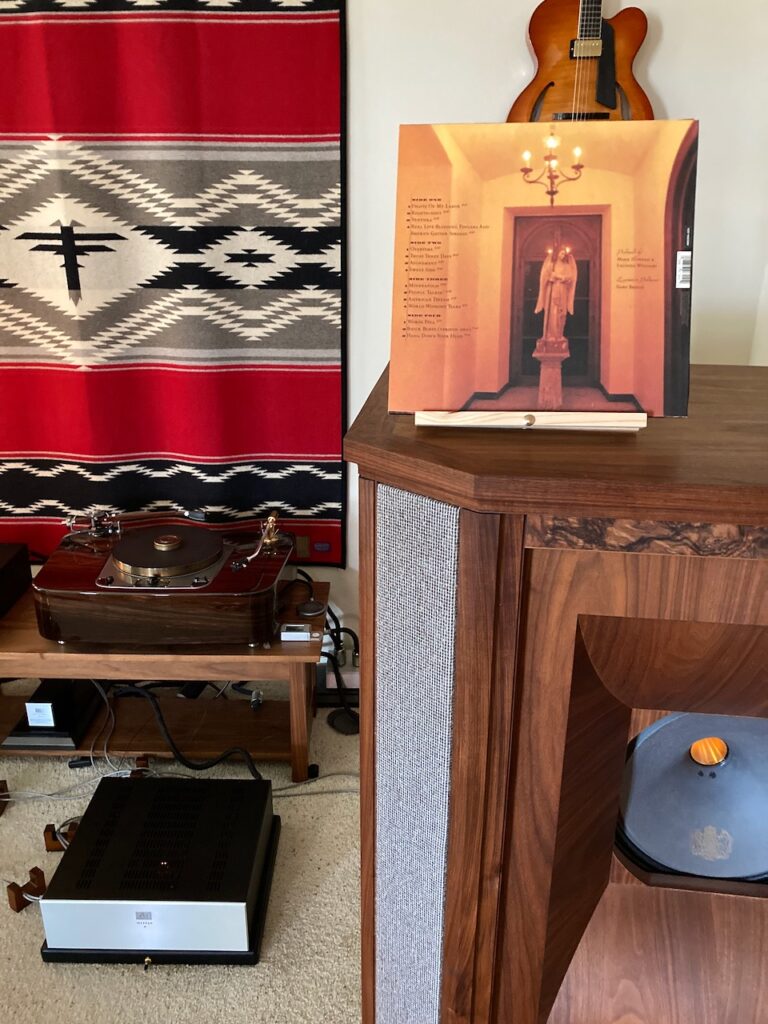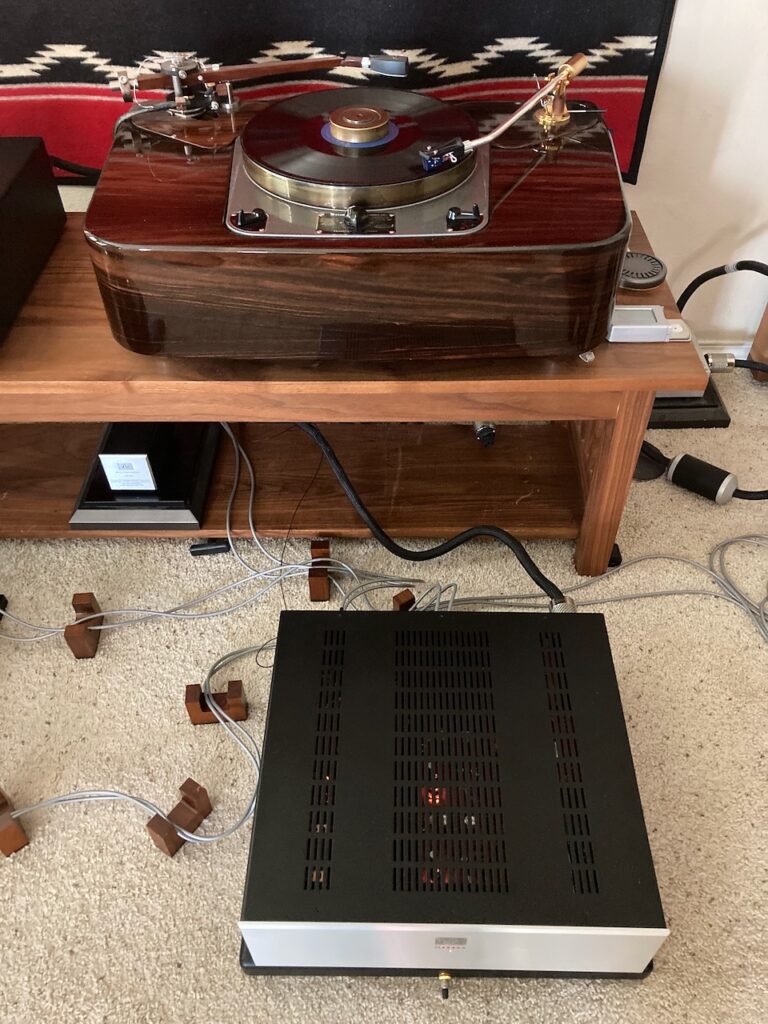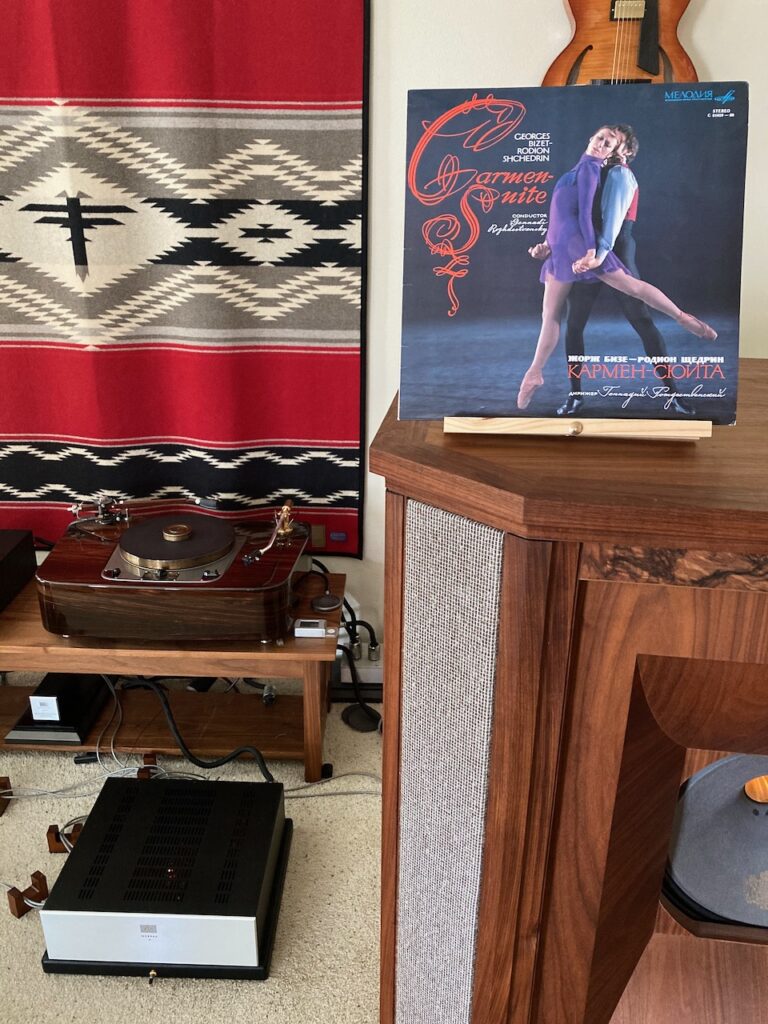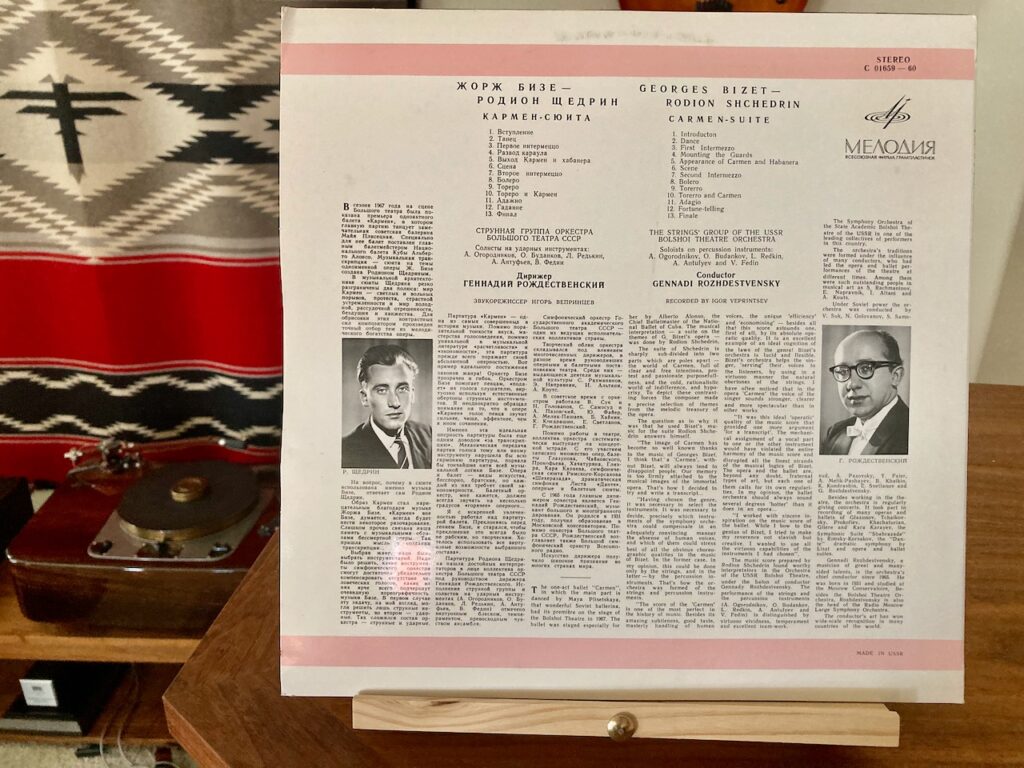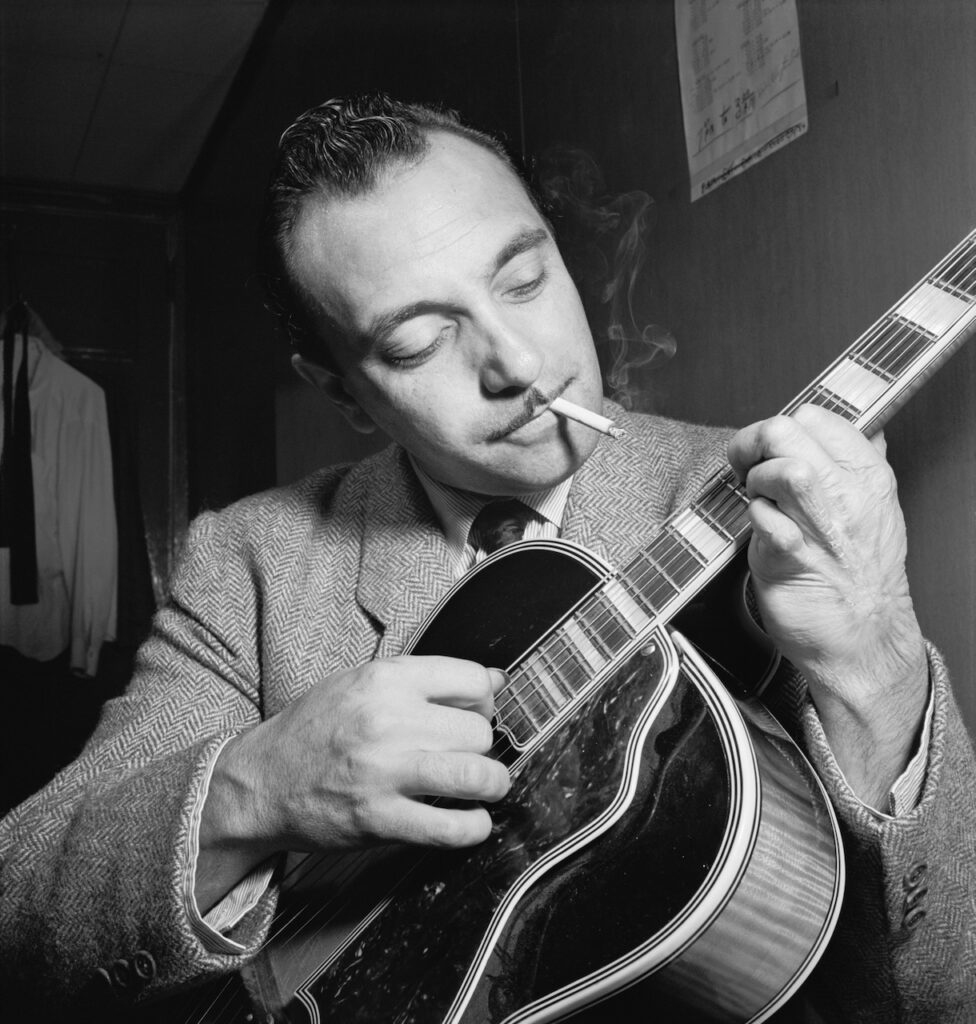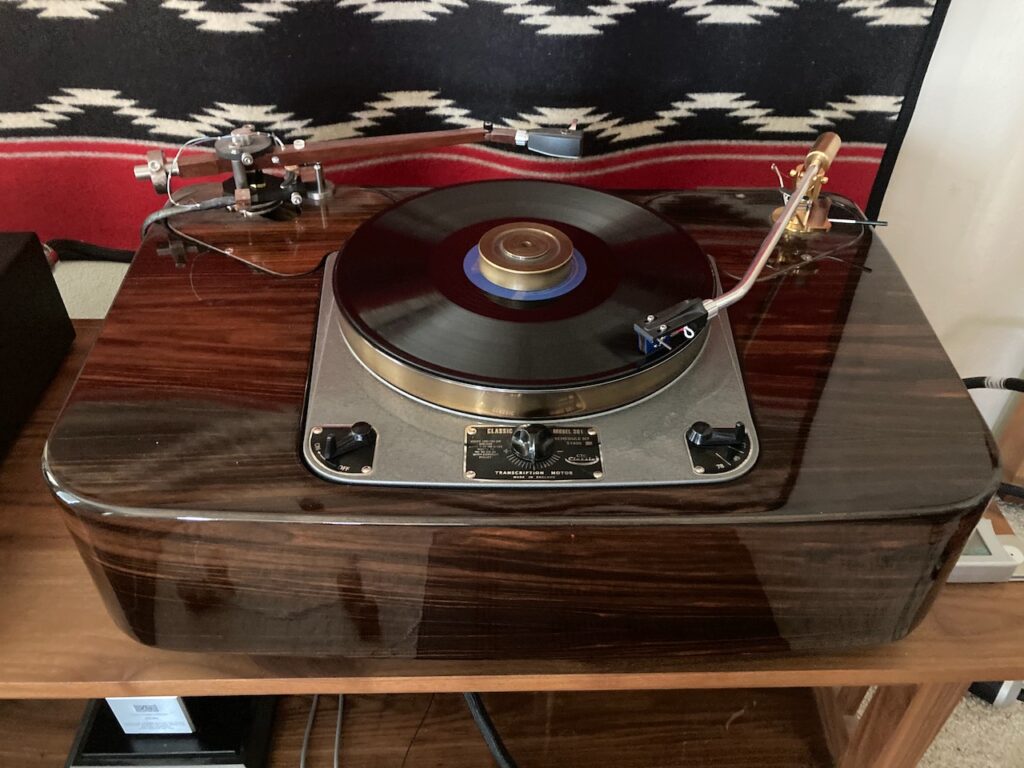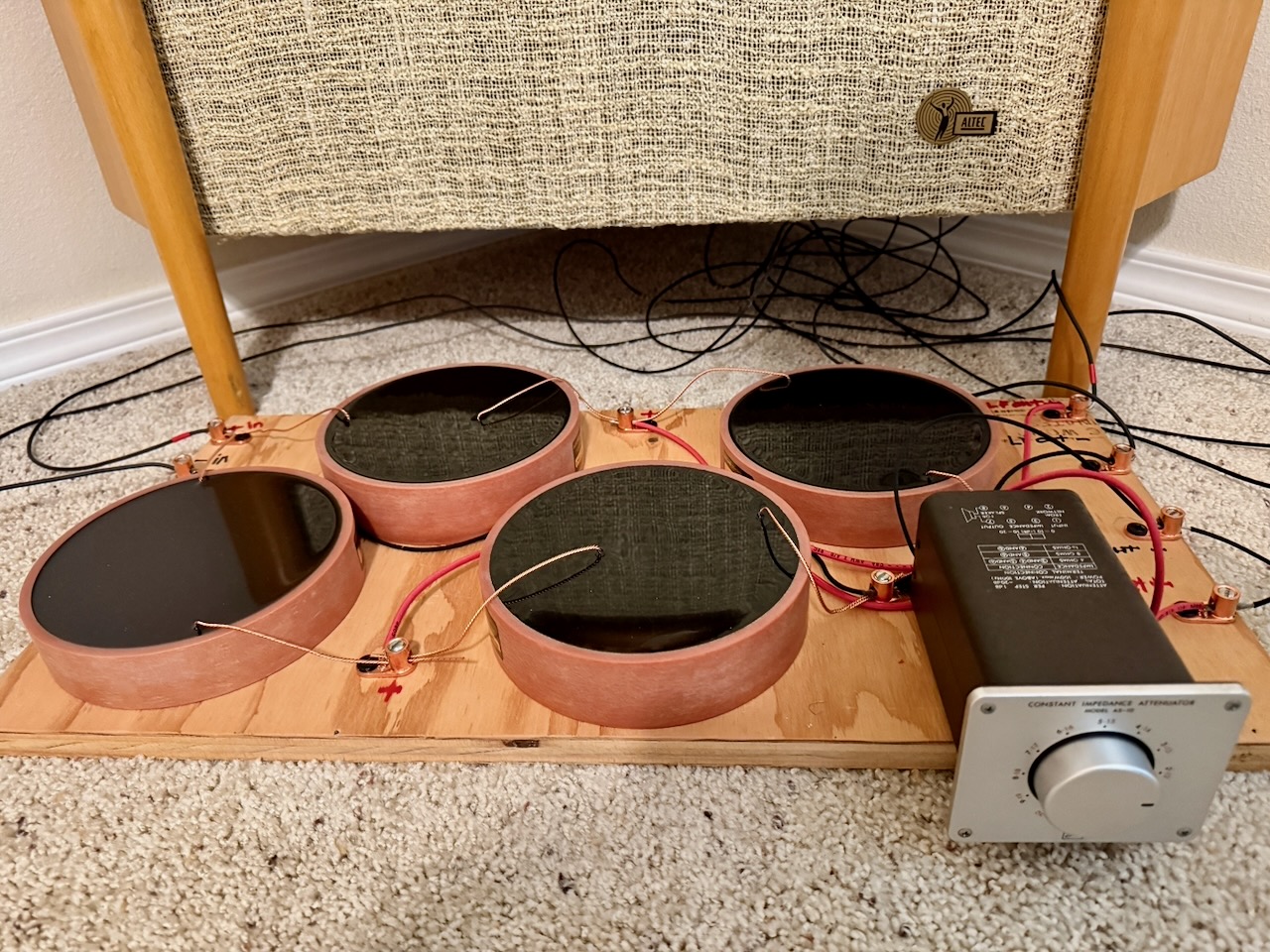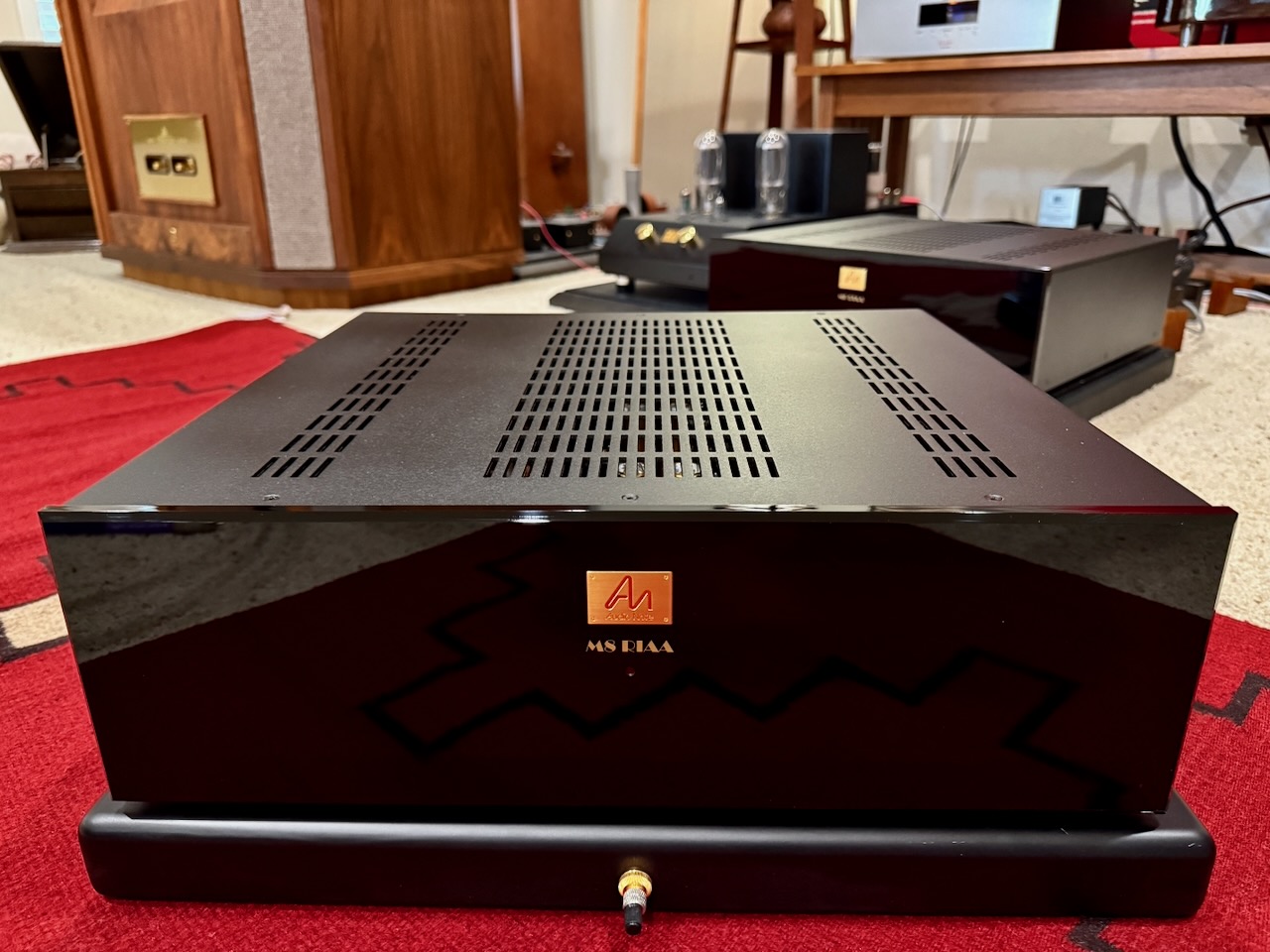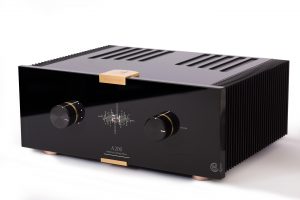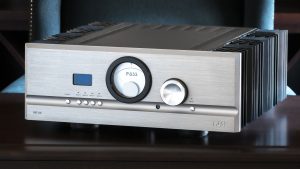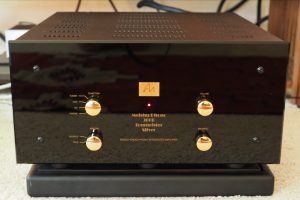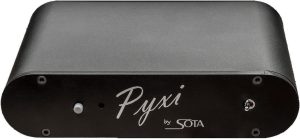Now let's expand our listening adventures to vinyl through the Audio Note (UK) M3 RIAA phono stage.
Getting back to the levels comparison starting point, let me offer some thoughts on performance when comparing the phono stage in the Meishu Phono Silver Tonmeister 300B to that of the M3 RIAA phono stage paired with the Tomei 211 integrated amplifier.
One of the things that really impressed me with Meishu 300B amp was how good the Audio Note (UK) CD 5.1x Red Book CD player performed in comparison to the heady performance of IO I moving-coil cartridge and silver AN-S4 step-up transformer combination.
I found digital from the CD 5.1x could go toe-to-toe in performance with LPs, and what determined the final winner in terms of sound quality and listening satisfaction was which media—CD or vinyl—had the highest quality mastering and production values.
For the same albums, sometimes CDs were better, and sometimes the LPs were better.
Now with the Tomei 211 integrated amp in the mix, the CD 5.1x's playback performance was revealed to be at a significantly higher level than it was with the Meishu 300B.
The CD 5.1x is ridiculously good at playing back CDs in a musically convincing fashion, and will likely outperform all but the very best of analog source components.
Given that, I sort of expected the CD 5.1x's performance to be another draw with the IO I MC cartridge and AN-S4 silver SUT combination, as played through the M3 RIAA phono stage and Tomei 211 combination, just as it was with the Meishu 300B.
My expectation was dead wrong. The M3 RIAA is one formidable phono stage, and it demonstrated that vinyl records have a lot more performance lurking in their grooves than I would have suspected, and they were there waiting for the M3 RIAA to come along to show what they could really do.
On the best of stereo magnetic era recordings, my CD to LP comparisons for the same album with the M3 RIAA became a slam dunk win for vinyl.
As impressive as the CD 5.1x CD player is—it is better than most vinyl front ends I've heard—when going up against the M3 RIAA phono stage the end result wasn't even close.
Sound quality wise, musicality wise, and emotional impact wise, the M3 RIAA was the knockout winner in every playback criteria I value, except for one aspect - not all albums are available on vinyl.
Examples like the 78 rpm transfers from the acoustic and electric eras of the recording arts that I've loved listening to through the CD 5.1x are still only accessible to most listeners in the form of CDs.
So for the listener who wants to experience all of our remarkable recorded music canon at its very best, both digital and analog sources are still a must.
World Without Tears is my favorite Lucinda Williams album (above).
Lucinda was the daughter of poet and literature professor Miller Williams, which no doubt aided Lucinda in developing her considerable song writing talents, and which she has been engaging in since the age of six. Lucinda's mother, amateur pianist Lucille Fern Day, introduced her to playing music early, and Lucinda was accomplished at playing the guitar by the age of 12.
I went to Lucinda's 20th Anniversary Tour of her album Car Wheels on a Gravel Road in 2018, and I can attest that Lucinda is an exceptional live performer, as well as a recording artist.
At the concert Lucinda mentioned that all her songs were autobiographical in nature. On World Without Tears the songs are dark, full of emotional pain, with disturbing imagery, and the recording quality of her vocals is purposely (?) a bit edgy to drive those raw feelings home to the listener. Lucinda not only wants you hear what she is saying, but she wants you to feel it too.
On World Without Tears the M3 RIAA phono stage showed that this studio album was recorded with great care, and audiophiles will appreciate that the M3 RIAA throws a wide, deep, and naturally tall soundstage, with excellent imaging performance, and a sense of acoustic space that suffuses the recording.
I really liked the way the M3 RIAA presented those visuospatial elements of the recording, and it clearly revealed the engineers involved in mixing and mastering the album paid close attention to those qualities. Each instrument—and Lucinda's vocals—were clearly resolved by the M3 RIAA as images on a wide and deep soundstage.
Speaking of resolution, I heard a lot of inner detail being recovered by the M3 RIAA, way more than I'm used to hearing from the other phono stages in my experience, and that resolution didn't come at the expense of an overall natural tonality, realistic timbral textures and tone, or accurate chordal tone colors that lend so much feeling to the emotional vibe of the music.
Songs like "Real Live Bleeding Fingers and Broken Guitar Strings" need to be played barroom loud to really get the emotional feel Lucinda is trying to get across in the song.
A lot of audio systems can sound stressed when playing at loud live-like levels, but the M3 RIAA doesn't disappoint by losing coherence, sacrificing dynamic distinctions, or sounding overtly brash at higher SPLs, like some kit will, but rather the M3 RIAA excelled by being able to play loud while never sounding unnatural or losing its composure for the sense of the music.
I might add that the Tomei 211's 20 watts per channel of power felt more like 200 watts per channel, and I never ran out of power even at crazy loud barroom volumes.
Those elements that make music come alive emotionally, like a realistic feeling of flow for the music at a given tempo, the ability to articulate dynamics from soft to loud (that also helps to inform the feel of melodies and beat), to clearly articulate chordal tone colors for emotional shading, are superb through the M3 RIAA. Extraordinary, really.
I found the M3 RIAA to be an excellent match to the Tomei 211 integrated amplifier, and together they really delivered a complete music listening experience from World Without Tears. I marveled at the excellent mixing and mastering of the album to yield an exciting portrayal of visuospatial qualities, the realism of timbral textures, chordal tone colors, dynamics, and tempos.
The instrumental sound quality was superb with the M3 RIAA, and the purposeful edge to Lucinda's vocals gets the message across that this is an album about the darkest emotional elements of pain, sin, disappointment, love, heartbreak, yet with a glimmering of hope about the beautiful mystery of how the light gets in.
I not only heard that from the M3 RIAA and Tomei 211 combination externally with my ears, but they also allowed the music to transcend mere sound quality concerns so that I heard it, felt it, and experienced it with my 'inner ears' in my heart and soul for a complete musical listening experience.
My next example album is the Carmen Suite composed by Georges Bizet and Rodion Shchedrin (inspired from Bizet's 1875 Carmen opera), with Gennadi Rozhdestvensky conducting The Strings' Group Of The USSR Bolshoi Theatre Orchestra (Мелодия C 01659-60, USSR, 1968).
This album was recorded by the talented Igor Veprintsev during the quality peak of the stereo magnetic era of recording in 1968, and is superb in terms of both the recording quality and the musical performance.
This is one of those hard to find albums, but if you ever see a copy be sure to grab it, as it's sure to become one of your most treasured albums.
Through the M3 RIAA the natural tonality and timbral textures were gorgeous, and there was a real 'snap' with percussion dynamics that I found impressive and exciting.
In quieter sections the M3 RIAA was full of suave and nuance, and when the music got more dramatic, the music was presented with an impressive authority of dynamics that kept me on the edge of my seat.
One of the things that impressed me with the M3 RIAA on this album was how it projected musical energy at me in my listening position. I was not just hearing the music, I was feeling it on my body, and feeling it inside me as my emotions were stirred by the music.
What kept coming to mind as I listened to music through the M3 RIAA, was that it provided a complete musical listening experience beyond any phono stages in my experience: not only did the M3 have superb sound quality in audiophile terms, but it also had an unparalleled ability to stir my emotions as a listener.
The amount of music that the M3 RIAA could extract from a record album and relay to me as a listener was truly extraordinary. The M3 RIAA has remarkable resolution, and its ability to unravel all of the instruments playing to give vivid imaging for each instrument was impressive, and beyond what I am used to hearing with other fine phono stages.
I felt like I really understood and connected with the artistic intent the conductor and musicians were trying to convey in the Carmen Suite with the M3 RIAA. I not only experienced the incredible sound quality of the recording, with vivid imaging, tonal correctness, and dynamic sophistication, but I felt like I was absorbing the artistic energy of the performance, like the energy was becoming a part of my inner being that thrilled and fulfilled me—a preternatural quality in audio performance.
Not only did the M3 RIAA provide me a lot of insight into the music as a listener, it also was able to provide me with a lot of insight into the recording without losing sight of the music, while emphasizing experiencing the feelings associated with the music, to make it come alive as an expression of the musicians artistic intent.
For my final LP example: Ever since jazz guitarist David Gitlen introduced me to the tribute album for gypsy jazz guitarist Django Reinhardt, For Django, it has become my favorite album by jazz guitarist Joe Pass.
Public Domain photo of Django Reinhardt at the Aquarium jazz club in New York by William P. Gottlieb, from the Library of Congress's Music Division.
Recorded in 1964 at Pacific Jazz Studios in Hollywood during the heyday of the stereo magnetic era of recording, and featuring Joe Pass (guitar), John Pisano (guitar), Jim Hughart (bass), and Colin Bailey (drums), For Django is a classic jazz album with excellent recording quality and remarkable musicianship.
The version of For Django that I have is from the Blue Note Tone Poet series of reissues. An all analog remaster by Kevin Gray at Cohearent Audio from the original master tape, on 180 gram vinyl, and the sound quality is excellent.
If you enjoy jazz, I definitely recommend this album to you for your music library, it is a winner.
The cymbals on "Django" were natural sounding, resolved, and remarkably live-like through M3 RIAA phono stage. Joe's Gibson ES-175 jazz guitar had remarkably beautiful tone and well delineated chordal tone colors, just as it would in life.
The visuospatial aspects of the recording—imaging, soundstage, etc.—through the M3 RIAA were truly exceptional, and added to the allure of the exceptional musicianship of Joe, John, Jim, and Colin.
It would be easy to go on with many more example albums of how impressed I was with the M3 RIAA playing vinyl in combination with the Tomei 211 integrated amplifier, but suffice it to say I was never any less than thrilled with what I was hearing when playing album after album in marathon listening sessions.
The M3 RIAA is so good in every aspect of its performance I couldn't really find anything to negatively criticize about its performance. It's just that good.




